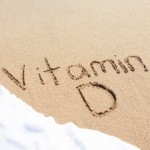
During the 1920s a number of studies focused on the role of vitamin D in caries and more recently low 25(OH)D concentrations have been linked with caries (25(OH)D is the primary form of vitamin D in the circulation). A recent review (Dental Elf – 20th Nov-2012 ) has also suggested that vitamin D supplementation reduced cries risk.
The aim of this study was to assess the relationship between serum 25(OH)D status and dental caries in Canadian school-aged children, aged 6 to 11 y,
Methods
Data for this study were obtained from a cohort of children 6 to 11 y of age participating in the Canadian Health Measures Survey (CHMS) between 2007-9. Data collection involved direct physical measurements and interviews. Dental examinations were conducted by calibrated examiners. Outcome variables included the presence of caries and overall total caries score (dmft/DMFT index)
Vitamin D status was determined by analyzing 25(OH)D concentrations in serum samples collected during the clinical visit. 25(OH)D is the primary form of vitamin D in the circulation and is the best indicator of vitamin D ≥50 nmol/L was used as the cutoff value for adequacy.
Data on tooth brushing frequency, dental visit history, and water fluoridation status, socio-economic status and dental insurance were also available.
Results
- 1,081 children 6 to 11 y of age participated in the CHMS
- Questionnaire an clinical data were available for 1,017 children
- 87.5% of children met the threshold for 25(OH)D adequacy (≥50 nmol/L) and 49.7% had optimal concentrations (≥75 nmol/L).
- Overall, 56.4% of children experienced caries,
- Mean dmft/DMFT score was 2.47 (95%CI; 2.09 to 2.84).
- The unadjusted odds of children with 25(OH)D levels ≥75 nmol/L having experienced caries was 0.57 (95% CI 0.39 to 0.82), while the odds for caries at the ≥50 nmol/L level was 0.56 (95% CI 0.39 to 0.89).
- After controlling for other covariates, backward logistic regression revealed that the presence of caries was significantly associated with 25(OH) levels <75 nmol/L and <50 nmol/L, not brushing twice daily, and yearly visits to the dentist.
| 25(OH)D concentrations ≥75 nmol/L
Odds ratio (95% CI) |
25(OH)D concentrations ≥50 nmol/L
Odds ratio (95% CI) |
|
| 25(OH)D status | 0.61 (0.46 – 0.79) | 0.53 (0.34 – 0.84) |
| Not brushing twice daily, | 0.58 (0.36–0.92) | 0.54 (0.35–0.84) |
| Yearly visits to the dentist. | 2.04 (1.06–3.92) | 2.00 (1.08–3.70) |
- Similarly, multiple linear regression revealed that total dmft/DMFT caries scores were also associated with 25(OH)D concentrations <75 nmol/L, not brushing twice daily, lower household education, and yearly visits to the dentist
Conclusions
The authors concluded:
Data from a cross-sectional, nationally representative sample of Canadian children suggest that there is an association between dental caries and lower vitamin D. Children with 25(OH)D concentrations ≥75 nmol/L had a 39% lower odds of having experienced caries, while children with levels ≥50 nmol/L had a 47% lower odds for caries. Improving children’s vitamin D status may be an additional preventive consideration to lower the risk for caries. Recommending regular vitamin D supplementation during childhood may decrease the overall burden of tooth decay in children.
Comments
This interesting study demonstrates a small association between vitamin D status and caries. The authors highlight the cross-sectional nature of this data pointing out that while the serum measure of 25(OH)D concentrations it may not represent the levels at time of tooth development or take into consideration seasonal or variation with age. Although they do discuss evidence to suggest that these do not vary significantly. While this study cannot demonstrate causality the discussion also highlight evidence from other studies including a review (Dental Elf – 20th Nov – 2012) which also support a potential link between vitamin D status and vitamin D.
Links
Primary paper
Schroth RJ, Rabbani R, Loewen G, Moffatt ME. Vitamin D and Dental Caries in Children. J Dent Res. 2016 Feb;95(2):173-9. doi: 10.1177/0022034515616335. Epub 2015 Nov 9. PubMed PMID: 26553883.

Vitamin D status and caries associated? https://t.co/ffTqm0B7qU
Children with 25(OH)D concs ≥75 nmol/L had a 39% lower odds of caries https://t.co/ffTqm0B7qU
Hi @VitaminDCouncil Improving children’s vitamin D status may help lower the risk for caries. Pls RT our blog https://t.co/EtJ7u8VX10
Children with 25(OH)D concs ≥5 0nmol/L had a 47% lower odds of caries, https://t.co/ffTqm0B7qU
Don’t miss- Vitamin D status and caries associated? https://t.co/ffTqm0B7qU
[…] Vitamin D status and caries associated? […]